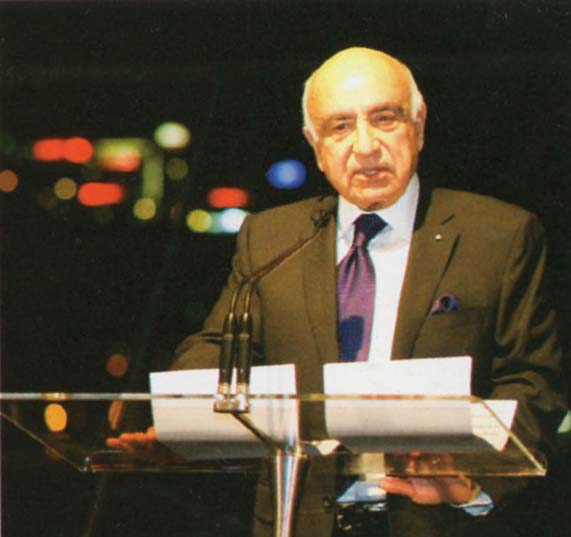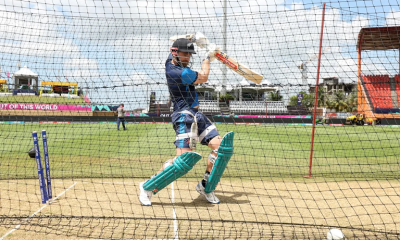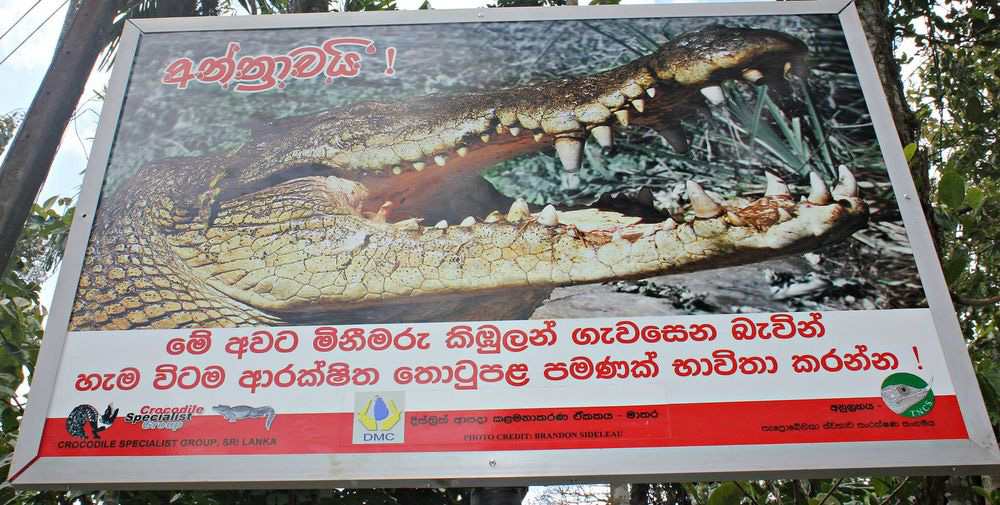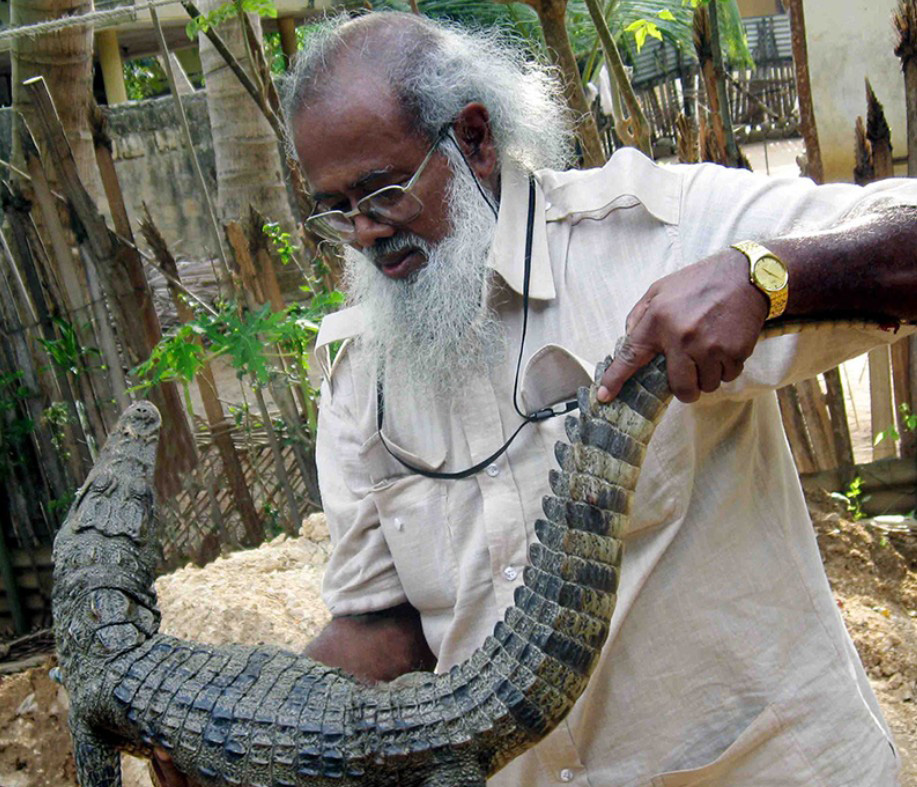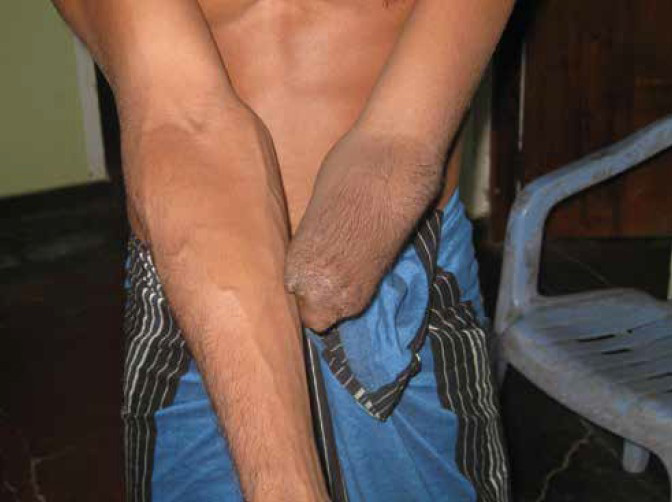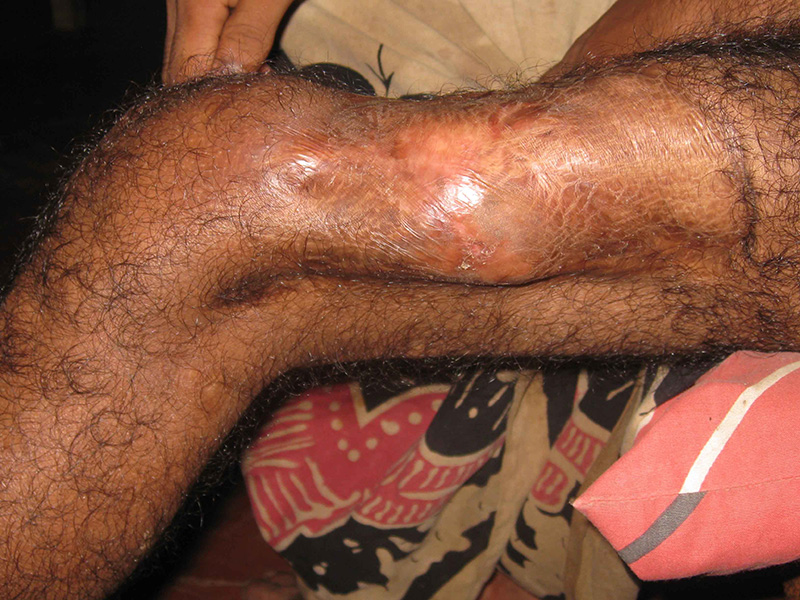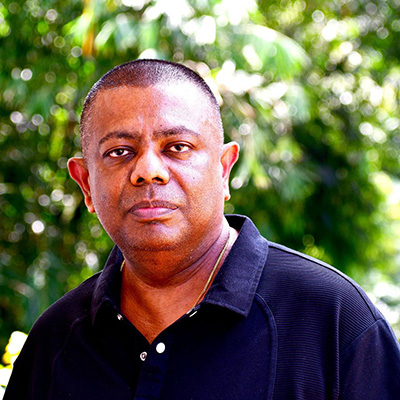Features
Entering Australia, early resistance and the platform for Dilmah’s success
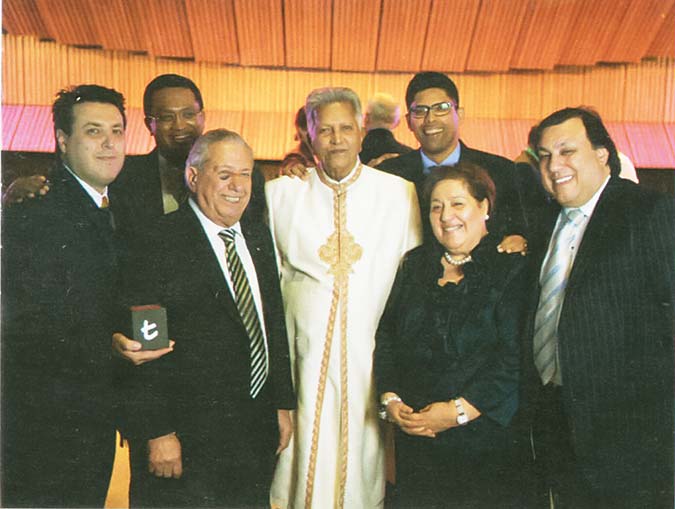
(Excerpted from the Merrill Fernando autobiography)
Australia and neighbouring New Zealand feature very prominently in my story as it was in Australia, in 1985, that I launched ‘Dilmah’ as a brand. I was familiar with the markets in those two countries as I had been exporting to both since my early days in the export trade. I had also made very useful connections during my days as one of the major bulk tea suppliers from Sri Lanka to Australia.
The late Bill Bennet, who, in the early 1950s trained as a tea taster at Heath & Co in Colombo, where he represented Bushells’ interests, became a good friend. A very friendly, large-hearted man, at that time he was also very much a mentor to me. Later, he joined his father in the family tea company, H. A. Bennet & Sons in Australia and, eventually, became its owner. He sold much of my bulk tea in Australia.
In my move from bulk to branded tea, his advice and guidance were invaluable. As was the case with many of my business associates, he and his family became very close to mine. For close upon 50 years, we never failed to meet on my visits to Melbourne, Australia. I was deeply saddened by the recent passing of this gentle and generous man.
Bill introduced me to his brother, Peter, and Jack Sholer, who owned the Australian Tea & Coffee Company, which used to supply private label tea and coffee to supermarkets. Since the demand for tea bags was growing and their factory was unable to meet the production increase, they turned to me for help. It was a very useful opportunity for me as, soon afterwards, I made a major breakthrough when I was awarded the contract to pack ‘Farmland’ tea bags for G. J. Coles, then the largest supermarket chain in Australia.
Initially, as I will describe in a subsequent chapter, my export initiatives of value-added tea were inhibited by restrictions on shipping opportunities and the differentiated freight rates for bulk and value-added tea. Those issues had to be resolved with a mix of confrontation, subtlety, and influence leverage and, after a long battle, I was able to achieve a reasonable parity.
In 1977 I acquired two tea bagging machines at a cost of around USD 500,000, but for about two years I was unable to generate any business. Eventually, after relentless promotion on my part, personally carried out, I obtained a decent opening in the G. J. Coles supermarket chain. I developed private labels for Coles, Woolworths, Franklins, Safeway and other smaller supermarket chains, within a year.
Max Currie, Head of Tetley and Lyons Australia, and I, established a very good relationship and I supplied him with tea bags under the Tetley label. I also encountered episodes of sabotage of my tea, most likely by his staff, as they would have feared that Max might transfer all the Tetley business in Sri Lanka to me. I went across to Australia and proved that a cigarette butt, which was allegedly found in one of my packs from Sri Lanka, would, most probably, have been introduced at the Aussie end, as that cigarette brand was not available in Sri Lanka! Eventually, after they secured their own tea bagging machines, I stopped supplying that label.
This was also a period of stringent exchange control regulations. Spending money abroad, even for genuine businessmen, was restricted to 10 pounds sterling per day for a 21-day maximum. Max was aware of this issue and was always generous to me with spending money, which was very useful. Despite my protests he continued this practice even after controls were relaxed.
Max was also the Chairman of the Victoria Economic Council, a very influential position in a Labour Party Government body. He offered me some very generous concessions, including a proposal for me to transfer tea bagging machines and to set up an operation in Melbourne, for which he would find the necessary land. He also offered me funding through the Economic Council. However, I explained to him that my philosophy was to provide employment in my country and to ensure that the benefits of value addition would remain in Sri Lanka.
His wife, Meris, too became our friend as she was especially fond of both Malik and Dilhan. She presented them with lovely sweaters and other woollen clothing when they were schooling in England. Max moved on a few years ago but Meris continues to live in Melbourne and I do not fail to meet her whenever I visit that city.
Why Dilmah?
`DILMAH, ‘the brand name that now symbolizes Quality Pure Ceylon Tea in over a hundred countries, was coined by combining the names of my two sons, Dilhan and Malik. When I linked the names of my two sons to my brand, I was demonstrating my commitment to my promise to deliver a quality product at a reasonable price, and the credibility of my pledge to the customer. My brand was as part of my family as my two sons were. In retrospect, despite the early setbacks and the initial misgivings of advertising and marketing experts about the potential of a brand name, which, in their view, did not seem linked to tea, it proved to be one of the best marketing decisions I had ever made.
The trial launch took place in 1985, in Australia, with a decent-looking but by no means impressive pack. This was well before the art of the graphic designer and five colour printing. I designed my own pack and first called it ‘Dilma’. I was then 55 years old and close to the age when most people retire!
My friend Gamini Goonesena, formerly a famous cricketer both in England and Sri Lanka, was then working for the Australian advertising agency, appointed by the Sri Lanka Tea Board, as the official media company for the promotion of Sri Lanka tea brands in Australia. Gamini helped me source a distributor, Aeroplane Jelly, a small, family-owned, jelly-producing company. I selected it because they had good access to the retail trade, especially in New South Wales.
However, I made slow progress with them and it soon became clear that the challenge of marketing a new product category like tea, in a highly-competitive environment, was beyond their capabilities. Therefore, I moved to Mauri Foods whilst George Patterson, a leading advertising agency, re-designed the package, which remains much the same to this day.
Patterson developed a new campaign strategy, with one of the first key initiatives being consumer testing of the brand name, ‘Dilma’. The results indicated that ‘Dilma’ did not have sufficient punch to create significant brand awareness and visibility. There were doubts about its appeal to a highly-sophisticated market like Australia. However, the creation of a new brand name was out of the question; quite apart from the sunk costs and the prohibitive additional cost of rebranding, my sentimental attachment to the brand name precluded any such consideration.
Finally, following rigorous consumer testing, it was decided to add the ‘H’ at the end of ‘Dilma’ and rebrand as ‘Dilmah’. Thus the brand was born. It was relaunched with a new packaging design, which was printed in Singapore to ensure highest quality in presentation.
Early struggles
I came up against stiff resistance when I tried to find a supermarket chain which would give ‘Dilmah’ space on its shelves. The Coles supermarket chain buyer whom I approached maintained that he was happy with the tea brands he was already selling and that he did not see the need to add to the portfolio of selling brands which had been around for generations. I had many friendly arguments with him, trying to get him to understand that big brand owners were simply looking for profit, without any concern for the consumer, who is driven to buy whatever is on the shelf, regardless of the quality of the product.
I tried to convince him that what was on the shelf was commodity tea and that whilst the brand names remained the same, the contents had changed and the consumers, who had been weaned on quality Ceylon Tea, were now being deceived by an inferior product. Finally, either convinced by my arguments or simply to appease my insistence, he accepted two Dilmah products and put genuine, quality Ceylon Tea back on the Coles supermarket shelf.
It was also a watershed moment in my life as a tea entrepreneur; for the first 38 years I had been supplying tea in bulk to blenders and packers around the world. With the launching of my own brand, ‘Dilmah,’ I took the first steps towards the fulfilment of a promise I had made to myself, as a young man in his novitiate in the tea trade.
Initially, despite my long experience in tea and my knowledge of multinational marketing strategies, I was still a bit naive. It was my intention to price Dilmah 20 cents above the market leader, but the Coles buyer would not agree. In deference to his opinion and advice, I priced it at AUS Dollars 1.89, 10 cents less. I was delighted with what I had achieved, in ignorance of what was to follow.
As Dilmah was relatively small, unknown, and, in my perception, posed no threat to the established multinational brands, I never expected a reaction from them. However, the then market leader discounted its tea to AUS Dollars 1.49 at the very next promotion. I was both disappointed and dispirited. I assumed that my long-held dream to bring Pure Ceylon Tea back to the consumer would have to remain as such. I fully expected Dilmah to be taken off the shelves when it came up for review three months later.
The Dilmah philosophy was a threat to the multinational operational style. The foundation of the latter, a well-entrenched colonial concept, is to subjugate the producer by acquiring his product in bulk, as a raw material, and to add real value by branding, packaging, and marketing elsewhere. Dilmah had broken that mould by adding that value in the country of production itself. If many others were to follow that example, the mass market traders’ business would be at serious risk. Hence, the immediate retaliatory response in Australia, which included aggressive media campaigns mounted by Lipton, Bushells and Lanchoo the then market leaders to counter my entry in to the Australian market with Dilmah.
Therefore, in the background of an envisaged worst case scenario, I was rendered speechless when, at my next visit to the Coles buyer, he said: “I have good news for you.” Apparently, never before had he received so many messages from happy customers, as he did about Dilmah, commending the product. The callers had thanked Coles for bringing real Ceylon Tea back in to their cups. That marked the beginning of the Dilmah success and the confirmation of my long-held belief, that if you deliver good quality consistently, the consumer will extend patronage. The brand is built and sustained by the happy customer.
Australia was a market with other, inherent advantages for a proposition such as Dilmah, as that market offered many house brands and generic packs, largely of Ceylon Tea. Whilst all such packs were under importers’ brands, with suppliers and origins changing from time to time, it was still an important part of Australian business and a pattern of trade and distribution common in other Western countries as well.
The opportunity given to me earlier, to provide such house brands and generic packs to retailers, gave me an invaluable insight in to the dynamics of the Australian tea market. That experience with the distribution system, and my connections with the retailers and their management, enabled me to very effectively introduce my own brand later.
Having first worked with Mauri Foods, I moved to Cerebos Australia whilst working with a few other foodservice importers. Subsequently, with the sales of Dilmah gathering momentum, I set up ‘Dilmah Australia’ as a company and a marketing platform, to operate in association with Broker Counterpoint Marketing Services. The latter functioned as regional brokers whilst we managed the customers and logistics through a logistics company. I recruited Cindy Dean, wife of a good friend, Ishan Ratnam, as the General Manager of Dilmah Australia. Thus, with my own team in place, I was beginning to achieve my goals for Dilmah in Australia.
However, I found that our distributors did not always share my passion for Dilmah and, as a result, I had to constantly review marketing strategies and distribution arrangements. One disappointing experience was with Valcorp, in 2008. I found that this company, headed by John Valmobida, did not possess the competencies and attributes necessary to drive Dilmah with the kind of energy that I liked to see. Finally, when we were unable to arrive at a resolution of issues regarding distribution of Dilmah in Sydney, Valmobida suggested that the operations agreement between us be cancelled.
I immediately agreed and resisted all his subsequent attempts to change my mind. From then on, having given Valcorp a couple of months’ grace, we set up our own distribution, eventually managed by Rohan Meegama, the son of my Shipping Manager when I was at A. F. Jones. Rohan was the Warehouse Manager for Valcorp and, despite the misgivings of both colleagues and friends, I set him up in the warehousing business on his own and entrusted our distribution in Australia to him. He has been doing an excellent job ever since.
Consequences of stress
That was a particularly trying time for me personally as, under the strain of resolving problems that were cropping up in all the major cities in Australia where we were in business, I actually fell physically ill. I was flying between cities almost on a daily basis and as a result of developing a seemingly unquenchable thirst, consuming large quantities of lemonade and other carbonated drinks. It was one of the most stressful periods in my life.
After a very strenuous spell in Australia I returned to Colombo soon afterwards, flew to London, still feeling terribly unwell but understanding the reason. A couple of days after I landed, the late Daya de Silva, then my doctor in London, diagnosed that I had come in for Type 2 Diabetes! An incipient condition had been triggered in to a major health episode by work stress. He wanted to immediately hositalize me but agreed to let me stay at home on the strict understanding that I would ring him twice a day, to personally report on my condition.
In the launching and promotion of Dilmah tea in Australia, I had to contend with humiliation, disappointment, and interventions designed to damage my progress. In addition, there was also opposition from people in Sri Lanka itself. However, whilst I was deeply shaken by the fierce and often unscrupulous competition from the multinationals, I was also inspired by the welcome reception to the concept of a quality tea that I eventually received from the supermarket buyer and the consumer. My persistence at that level paid off and resulted in supermarket chains agreeing to stock my products.
A refreshing counterpoint to the initial hostility I faced in Australia was the friendly reception, from the Romeo & Drake families of Adelaide, both running independent supermarket chains in South Australia. My association with these two families goes back to over 40 years. In the charming nature of such close-knit, traditional family businesses, very much like mine, the relationship has been extended to the second and third generations.
Rodney Arambawela, a proactive official
Rodney was Sri Lanka’s Tea Commissioner in the Middle East (Gulf Region) from 1975-1982. During this period of service he was stationed in Dubai, before it became the sophisticated and modern centre of business activity that it is today. I got to know him then and shared with him, my ideas for the launch of a Pure Ceylon Tea brand of my own.
In 1982, during Major Jayawickrema’s period as Minister of Plantation Industries, Rodney was appointed as Tea Commissioner to Australia, New Zealand, and the Pacific Islands. His appointment came at a time when the market for Ceylon Tea in Australia had declined alarmingly, with Australian packers opting for cheaper tea from different origins, more suitable for tea bags. Rodney’s remit in Australia, as defined by the minister himself, was to strategize the revitalization of the Ceylon Tea market in the country.
Apart from my own knowledge of the Australian market, the market research that Rodney conducted after assuming duties in Australia, provided statistics which were very helpful in the launch of Dilmah in that country. He was also very supportive in the early promotional campaigns and took an active part in the related activities. His proactive response to the project, and his enthusiasm for its successful implementation, was in complete contrast to the passive and often obstructionist attitude of some of the members of the Secretariat in Colombo. After leaving the Tea Board in 1988, Rodney reverted to an academic career but still continued his promotion of Dilmah in various forums. His assistance to the cause of Dilmah in Australia has been invaluable.
Nabi Saleh my friend
My story of Dilmah in Australia would not be complete without mention of Nabi Saleh, a highly-educated, Iranian-Australian businessman and commodities trader. I met Nabi, quite unexpectedly, about 40 years ago at the Franklins Supermarket, Sydney, whilst we were both waiting to meet the same buyer, Michael Hansel. We were competitors at first. but later became trade associates and, more importantly, good friends.
Nabi was then a private label supplier to Franklins and other distributors. through a small-time packer in Indonesia. After that first meeting. Nabi bought private label tea from me as well. In 1995 Nabi became the owner/Chief Executive Officer of Gloria Jean’s Coffee, a venture he developed into a worldwide success. Nabi admired my vision for Pure Ceylon Tea and was of assistance to me in establishing Dilmah in Australia. Like me, Nabi is also a man of great faith.
Features
When floods strike: How nations keep food on the table

Insights from global adaptation strategies
Sri Lanka has been heavily affected by floods, and extreme flooding is rapidly becoming one of the most disruptive climate hazards worldwide. The consequences extend far beyond damaged infrastructure and displaced communities. The food systems and supply networks are among the hardest hit. Floods disrupt food systems through multiple pathways. Croplands are submerged, livestock are lost, and soils become degraded due to erosion or sediment deposition. Infrastructural facilities like roads, bridges, retail shops, storage warehouses, and sales centres are damaged or rendered inaccessible. Without functioning food supply networks, even unaffected food-producing regions struggle to continue daily lives in such disasters. Poor households, particularly those dependent on farming or informal rural economies, face sharp food price increases and income loss, increasing vulnerability and food insecurity.
Many countries now recognie that traditional emergency responses alone are no longer enough. Instead, they are adopting a combination of short-term stabilisation measures and long-term strategies to strengthen food supply chains against recurrent floods. The most common immediate response is the provision of emergency food and cash assistance. Governments, the World Food Programme, and other humanitarian organisations often deliver food, ready-to-eat rations, livestock feed, and livelihood support to affected communities.
Alongside these immediate measures, some nations are implementing long-term strategic actions. These include technology- and data-driven approaches to improve flood preparedness. Early warning systems, using satellite data, hydrological models, and advanced weather forecasting, allow farmers and supply chain operators to prepare for potential disruptions. Digital platforms provide market intelligence, logistics updates, and risk notifications to producers, wholesalers, and transporters. This article highlights examples of such strategies from countries that experience frequent flooding.
China: Grain Reserves and Strategic Preparedness
China maintains a large strategic grain reserve system for rice, wheat, and maize; managed by NFSRA-National Food and Strategic Reserves Administration and Sinograin (China Grain Reserves Corporation (Sinograin Group), funded by the Chinese government, that underpins national food security and enables macro-control of markets during supply shocks. Moreover, improvements in supply chain digitization and hydrological monitoring, the country has strengthened its ability to maintain stable food availability during extreme weather events.
Bangladesh: Turning Vulnerability into Resilience
In recent years, Bangladesh has stood out as one of the world’s most flood-exposed countries, yet it has successfully turned vulnerability into adaptive resilience. Floating agriculture, flood-tolerant rice varieties, and community-run grain reserves now help stabilise food supplies when farmland is submerged. Investments in early-warning systems and river-basin management have further reduced crop losses and protected rural livelihoods.
Netherlands, Japan: High-Tech Models of Flood Resilience
The Netherlands offers a highly technical model. After catastrophic flooding in 1953, the country completely redesigned its water governance approach. Farmland is protected behind sea barriers, rivers are carefully controlled, and land-use zoning is adaptive. Vertical farming and climate-controlled greenhouses ensure year-round food production, even during extreme events. Japan provides another example of diversified flood resilience. Following repeated typhoon-induced floods, the country shifted toward protected agriculture, insurance-backed farming, and automated logistics systems. Cold storage networks and digital supply tracking ensure that food continues to reach consumers, even when roads are cut off. While these strategies require significant capital and investment, their gradual implementation provides substantial long-term benefits.
Pakistan, Thailand, Indonesia, and Vietnam: Reform in Response to Recurrent Floods
In contrast, Pakistan and Thailand illustrate both the consequences of climate vulnerability and the benefits of proactive reform. The 2022 floods in Pakistan submerged about one-third of the country, destroying crops and disrupting trade networks. In response, the country has placed greater emphasis on climate-resilient farming, water governance reforms, and satellite-based crop monitoring. Pakistan as well as India is promoting crop diversification and adjusting planting schedules to help farmers avoid the peak monsoon flood periods.
Thailand has invested in flood zoning and improved farm infrastructure that keep markets supplied even during severe flooding. Meanwhile, Indonesia and Vietnam are actively advancing flood-adapted land-use planning and climate-resilient agriculture. For instance, In Vietnam’s Mekong Delta, pilot projects integrate flood-risk mapping, adaptive cropping strategies, and ecosystem-based approaches to reduce vulnerability in agricultural and distribution areas. In Indonesia, government-supported initiatives and regional projects are strengthening flood-risk-informed spatial planning, adaptive farming practices, and community-based water management to improve resilience in flood-prone regions. (See Figure 1)
 The Global Lesson: Resilience Requires Early Investment
The Global Lesson: Resilience Requires Early Investment
The global evidence is clear: countries that invest early in climate-adaptive agriculture and resilient logistics are better able to feed their populations, even during extreme floods. Building a resilient future depends not only on how we grow food but also on how we protect, store, and transport it. Strengthening infrastructure is therefore central to stabilising food supply chains while maintaining food quality, even during prolonged disruptions. Resilient storage systems, regional grain reserves, efficient cold chains, improved farming infrastructure, and digital supply mapping help reduce panic buying, food waste, and price shocks after floods, while ensuring that production capacity remains secure.
Persistent Challenges
However, despite these advances, many flood-exposed countries still face significant challenges. Resources are often insufficient to upgrade infrastructure or support vulnerable rural populations. Institutional coordination across the agriculture, disaster management, transport, and environmental sectors remains weak. Moreover, the frequency and scale of climate-driven floods are exceeding the design limits of older disaster-planning frameworks. As a result, the gap between exposure and resilience continues to widen. These challenges are highly relevant to Sri Lanka as well and require deliberate, gradual efforts to phase them out.
The Role of International Trade and global markets
When domestic production falls in such situations, international trade serves as an important buffer. When domestic production is temporarily reduced, imports and regional trade flows can help stabilise food availability. Such examples are available from other countries. For instance, In October 2024, floods in Bangladesh reportedly destroyed about 1.1 million tonnes of rice. In response, the government moved to import large volumes of rice and allowed accelerated or private-sector imports of rice to stabilize supply and curb food price inflation. This demonstrates how, when domestic production fails, international trade/livestock/food imports (from trade partners) acted as a crucial buffer to ensure availability of staple food for the population. However, this approach relies on well-functioning global markets, strong diplomatic relationships, and adequate foreign exchange, making it less reliable for economically fragile nations. For example, importing frozen vegetables to Sri Lanka from other countries can help address supply shortages, but considerations such as affordability, proper storage and selling mechanisms, cooking guidance, and nutritional benefits are essential, especially when these foods are not widely familiar to local populations.
Marketing and Distribution Strategies during Floods
Ensuring that food reaches consumers during floods requires innovative marketing and distribution strategies that address both supply- and demand-side challenges. Short-term interventions often include direct cash or food transfers, mobile markets, and temporary distribution centres in areas where conventional marketplaces become inaccessible. Price stabilisation measures, such as temporary caps or subsidies on staple foods, help prevent sharp inflation and protect vulnerable households. Awareness campaigns also play a role by educating consumers on safe storage, cooking methods, and the nutritional value of unfamiliar imported items, helping sustain effective demand.
Some countries have integrated technology to support these efforts; in this regard, adaptive supply chain strategies are increasingly used. Digital platforms provide farmers, wholesalers, and retailers with real-time market information, logistics updates, and flood-risk alerts, enabling them to reroute deliveries or adjust production schedules. Diversified delivery routes, using alternative roads, river transport, drones, or mobile cold-storage units, have proven essential for maintaining the flow of perishable goods such as vegetables, dairy, and frozen products. A notable example is Japan, where automated logistics systems and advanced cold-storage networks help keep supermarkets stocked even during severe typhoon-induced flooding.
The Importance of Research, Coordination, and Long-Term Commitment
Global experience also shows that research and development, strong institutional coordination, and sustained national commitment are fundamental pillars of flood-resilient food systems. Countries that have successfully reduced the impacts of recurrent floods consistently invest in agricultural innovation, cross-sector collaboration, and long-term planning.
Awareness Leads to Preparedness
As the summary, global evidence shows that countries that act early, plan strategically, and invest in resilience can protect both people and food systems. As Sri Lanka considers long-term strategies for food security under climate change, learning from flood-affected nations can help guide policy, planning, and public understanding. Awareness is the first step which preparedness must follow. These international experiences offer valuable lessons on how to protect food systems through proactive planning and integrated actions.
(Premaratne (BSc, MPhil, LLB) isSenior Lecturer in Agricultural Economics Department of Agricultural Systems, Faculty of Agriculture, Rajarata University. Views are personal.)
Key References·
Cabinet Secretariat, Government of Japan, 2021. Fundamental Plan for National Resilience – Food, Agriculture, Forestry and Fisheries / Logistics & Food Supply Chains. Tokyo: Cabinet Secretariat.
· Delta Programme Commissioner, 2022. Delta Programme 2023 (English – Print Version). The Hague: Netherlands Delta Programme.
· Hasanuddin University, 2025. ‘Sustainable resilience in flood-prone rice farming: adaptive strategies and risk-sharing around Tempe Lake, Indonesia’, Sustainability. Available at: https://www.mdpi.com/2071-1050/17/6/2456 [Accessed 3 December 2025].
· Mekong Urban Flood Resilience and Drainage Programme (TUEWAS), 2019–2021. Integrated urban flood and drainage planning for Mekong cities. TUEWAS / MRC initiative.
· Ministry of Agriculture and Rural Affairs, People’s Republic of China, 2025. ‘China’s summer grain procurement surpasses 50 mln tonnes’, English Ministry website, 4 July.
· National Food and Strategic Reserves Administration (China) 2024, ‘China purchases over 400 mln tonnes of grain in 2023’, GOV.cn, 9 January. Available at: https://english.www.gov.cn/archive/statistics/202401/09/content_WS659d1020c6d0868f4e8e2e46.html
· Pakistan: 2022 Floods Response Plan, 2022. United Nations / Government of Pakistan, UN Digital Library.
· Shigemitsu, M. & Gray, E., 2021. ‘Building the resilience of Japan’s agricultural sector to typhoons and heavy rain’, OECD Food, Agriculture and Fisheries Papers, No. 159. Paris: OECD Publishing.
· UNDP & GCF, 2023. Enhancing Climate Resilience in Thailand through Effective Water Management and Sustainable Agriculture (E WMSA): Project Factsheet. UNDP, Bangkok.
· United Nations Development Programme (UNDP), 2025. ‘Rice Bank revives hope in flood hit hill tracts, Bangladesh’, UNDP, 19 June.
· World Bank, 2022. ‘Bangladesh: World Bank supports food security and higher incomes of farmers vulnerable to climate change’, World Bank press release, 15 March.
Features
Can we forecast weather precisely?

Weather forecasts are useful. People attentively listen to them but complain that they go wrong or are not taken seriously. Forecasts today are more probabilistically reliable than decades ago. The advancement of atmospheric science, satellite imaging, radar maps and instantly updated databases has improved the art of predicting weather.
Yet can we predict weather patterns precisely? A branch of mathematics known as chaos theory says that weather can never be foretold with certainty.
The classical mechanics of Issac Newton governing the motion of all forms of matter, solid, liquid or gaseous, is a deterministic theory. If the initial conditions are known, the behaviour of the system at later instants of time can be precisely predicted. Based on this theory, occurrences of solar eclipses a century later have been predicted to an accuracy of minutes and seconds.
The thinking that the mechanical behaviour of systems in nature could always be accurately predicted based on their state at a previous instant of time was shaken by the work of the genius French Mathematician Henri Poincare (1864- 1902).
Eclipses are predicted with pinpoint accuracy based on analysis of a two-body system (Earth- Moon) governed by Newton’s laws. Poincare found that the equivalent problem of three astronomical bodies cannot be solved exactly – sometimes even the slightest variation of an initial condition yields a drastically different solution.
A profound conclusion was that the behaviour of physical systems governed by deterministic laws does not always allow practically meaningful predictions because even a minute unaccountable change of parameters leads to completely different results.
Until recent times, physicists overlooked Poincare’s work and continued to believe that the determinism of the laws of classical physics would allow them to analyse complex problems and derive future happenings, provided necessary computations are facilitated. When computers became available, the meteorologists conducted simulations aiming for accurate weather forecasting. The American mathematician Edward Lorenz, who turned into a reputed meteorologist, carried out such studies in the early 1960s, arrived at an unexpected result. His equations describing atmospheric dynamics demonstrated a strange behaviour. He found that even a minute change (even one part in a million) in initial parameters leads to a completely different weather pattern in the atmosphere. Lorenz announced his finding saying, A flap of a butterfly wing in one corner of the world could cause a cyclone in a far distant location weeks later! Lorenz’s work opened the way for the development branch of mathematics referred to as chaos theory – an expansion of the idea first disclosed by Henri Poincare.
We understand the dynamics of a cyclone as a giant whirlpool in the atmosphere, how it evolves and the conditions favourable for their origination. They are created as unpredictable thermodynamically favourable relaxation of instabilities in the atmosphere. The fundamental limitations dictated by chaos theory forbid accurate forecasting of the time and point of its appearance and the intensity. Once a cyclone forms, it can be tracked and the path of movement can be grossly ascertained by frequent observations. However, absolutely certain predictions are impossible.
A peculiarity of weather is that the chaotic nature of atmospheric dynamics does not permit ‘long – term’ forecasting with a high degree of certainty. The ‘long-term’ in this context, depending on situation, could be hours, days or weeks. Nonetheless, weather forecasts are invaluable for preparedness and avoiding unlikely, unfortunate events that might befall. A massive reaction to every unlikely event envisaged is also not warranted. Such an attitude leads to social chaos. The society far more complex than weather is heavily susceptible to chaotic phenomena.
by Prof. Kirthi Tennakone (ktenna@yahoo.co.uk)
Features
When the Waters Rise: Floods, Fear and the ancient survivors of Sri Lanka
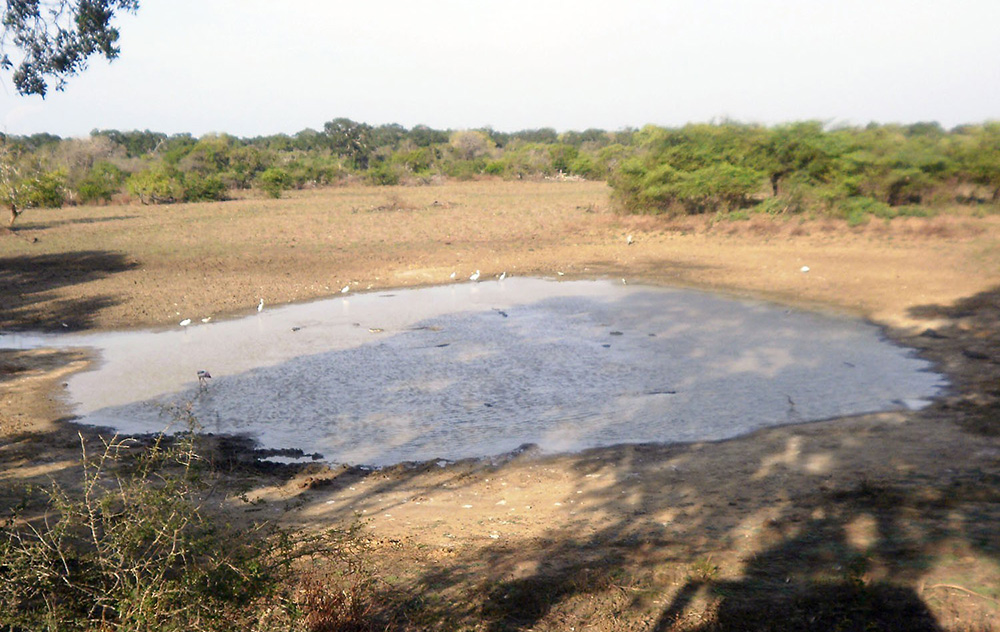
The water came quietly at first, a steady rise along the riverbanks, familiar to communities who have lived beside Sri Lanka’s great waterways for generations. But within hours, these same rivers had swollen into raging, unpredictable forces. The Kelani Ganga overflowed. The Nilwala broke its margins. The Bentara, Kalu, and Mahaweli formed churning, chocolate-brown channels cutting through thousands of homes.
When the floods finally began to recede, villagers emerged to assess the damage, only to be confronted by another challenge: crocodiles. From Panadura’s back lanes to the suburbs of Colombo, and from the lagoons around Kalutara to the paddy fields of the dry zone, reports poured in of crocodiles resting on bunds, climbing over fences, or drifting silently into garden wells.
For many, these encounters were terrifying. But to Sri Lanka’s top herpetologists, the message was clear: this is what happens when climate extremes collide with shrinking habitats.
“Crocodiles are not invading us … we are invading floodplains”
Sri Lanka’s foremost crocodile expert, Dr. Anslem de Silva, Regional Chairman for South Asia and Iran of the IUCN/SSC Crocodile Specialist Group, has been studying crocodiles for over half a century. His warning is blunt.
“When rivers turn into violent torrents, crocodiles simply seek safety,” he says. “They avoid fast-moving water the same way humans do. During floods, they climb onto land or move into calm backwaters. People must understand this behaviour is natural, not aggressive.”
In the past week alone, Saltwater crocodiles have been sighted entering the Wellawatte Canal, drifting into the Panadura estuary, and appearing unexpectedly along Bolgoda Lake.
“Saltwater crocodiles often get washed out to sea during big floods,” Dr. de Silva explains. “Once the current weakens, they re-enter through the nearest lagoon or canal system. With rapid urbanisation along these waterways, these interactions are now far more visible.”
- An adult Salt Water Crocodile (Crocodylus porosus) (Photo -Madura de Silva)
- Adult Mugger (Crocodylus plaustris) Photo -Laxhman Nadaraja
- A Warning sign board
- A Mugger holding a a large Russell ’s viper (Photo- R. M. Gunasinghe)
- Anslem de Silva
- Suranjan Karunarathna
This clash between wildlife instinct and human expansion forms the backdrop of a crisis now unfolding across the island.
A conflict centuries old—now reshaped by climate change
Sri Lanka’s relationship with crocodiles is older than most of its kingdoms. The Cūḷavaṃsa describes armies halted by “flesh-eating crocodiles.” Ancient medical texts explain crocodile bite treatments. Fishermen and farmers around the Nilwala, Walawe, Maduganga, Batticaloa Lagoon, and Kalu Ganga have long accepted kimbula as part of their environment.
But the modern conflict has intensified dramatically.
A comprehensive countrywide survey by Dr. de Silva recorded 150 human–crocodile attacks, with 50 fatal, between 2008 and 2010. Over 52 percent occurred when people were bathing, and 83 percent of victims were men engaged in routine activities—washing, fishing, or walking along shallow margins.
Researchers consistently emphasise: most attacks happen not because crocodiles are unpredictable, but because humans underestimate them.
Yet this year’s flooding has magnified risks in new ways.
“Floods change everything” — Dr. Nimal D. Rathnayake
Herpetologist Dr. Nimal Rathnayake says the recent deluge cannot be understood in isolation.
“Floodwaters temporarily expand the crocodile’s world,” he says. “Areas people consider safe—paddy boundaries, footpaths, canal edges, abandoned land—suddenly become waterways.”
Once the water retreats, displaced crocodiles may end up in surprising places.
“We’ve documented crocodiles stranded in garden wells, drainage channels, unused culverts and even construction pits. These are not animals trying to attack. They are animals trying to survive.”
According to him, the real crisis is not the crocodile—it is the loss of wetlands, the destruction of natural river buffers, and the pollution of river systems.
“When you fill a marsh, block a canal, or replace vegetation with concrete, you force wildlife into narrower corridors. During floods, these become conflict hotspots.”
Past research by the Crocodile Specialist Group shows that more than 300 crocodiles have been killed in retaliation or for meat over the past decade. Such killings spike after major floods, when fear and misunderstanding are highest.
“Not monsters—ecosystem engineers” — Suranjan Karunaratne
On social media, flood-displaced crocodiles often go viral as “rogue beasts.” But conservationist Suranjan Karunaratne, also of the IUCN/SSC Crocodile Specialist Group, says such narratives are misleading.
“Crocodiles are apex predators shaped by millions of years of evolution,” he says. “They are shy, intelligent animals. The problem is predictable human behaviour.”
In countless attack investigations, Karunaratne and colleagues found a repeated pattern: the Three Sames—the same place, the same time, the same activity.
“People use the same bathing spot every single day. Crocodiles watch, learn, and plan. They hunt with extraordinary patience. When an attack occurs, it’s rarely random. It is the culmination of observation.”
He stresses that crocodiles are indispensable to healthy wetlands. They: control destructive catfish populations, recycle nutrients, clean carcasses and diseased fish, maintain biodiversity, create drought refuges through burrows used by amphibians and reptiles.
“Removing crocodiles destroys an entire chain of ecological services. They are not expendable.”
Karunaratne notes that after the civil conflict, Mugger populations in the north rebounded—proof that crocodiles recover when given space, solitude, and habitat.
Floods expose a neglected truth: CEEs save lives—if maintained In high-risk communities, Crocodile Exclusion Enclosures (CEEs) are often the only physical barrier between people and crocodiles. Built along riverbanks or tanks, these enclosures allow families to bathe, wash, and collect water safely.
Yet Dr. de Silva recounts a tragic incident along the Nilwala River where a girl was killed inside a poorly maintained enclosure. A rusted iron panel had created a hole just large enough for a crocodile to enter.
“CEEs are a life-saving intervention,” he says. “But they must be maintained. A neglected enclosure is worse than none at all.”
Despite their proven effectiveness, many CEEs remain abandoned, broken or unused.
Climate change is reshaping crocodile behaviour—and ours
Sri Lanka’s floods are no longer “cycles” as described in folklore. They are increasingly intense, unpredictable and climate-driven. The warming atmosphere delivers heavier rainfall in short bursts. Deforested hillsides and filled wetlands cannot absorb it.
Rivers swell rapidly and empty violently.
Crocodiles respond as they have always done: by moving to calmer water, by climbing onto land, by using drainage channels, by shifting between lagoons and canals, by following the shape of the water.
But human expansion has filled, blocked, or polluted these escape routes.
What once were crocodile flood refuges—marshes, mangroves, oxbow wetlands and abandoned river channels—are now housing schemes, fisheries, roads, and dumpsites.
Garbage, sand mining and invasive species worsen the crisis
The research contained in the uploaded reports paints a grim but accurate picture. Crocodiles are increasingly seen around garbage dumps, where invasive plants and waste accumulate. Polluted water attracts fish, which in turn draw crocodiles.
Excessive sand mining in river mouths and salinity intrusion expose crocodile nesting habitats. In some areas, agricultural chemicals contaminate wetlands beyond their natural capacity to recover.
In Borupana Ela, a short study found 29 Saltwater crocodiles killed in fishing gear within just 37 days.
Such numbers suggest a structural crisis—not a series of accidents.
Unplanned translocations: a dangerous human mistake
For years, local authorities attempted to reduce conflict by capturing crocodiles and releasing them elsewhere. Experts say this was misguided.
“Most Saltwater crocodiles have homing instincts,” explains Karunaratne. “Australian studies show many return to their original site—even if released dozens of kilometres away.”
Over the past decade, at least 26 Saltwater crocodiles have been released into inland freshwater bodies—home to the Mugger crocodile. This disrupts natural distribution, increases competition, and creates new conflict zones.
Living with crocodiles: a national strategy long overdue
All three experts—Dr. de Silva, Dr. Rathnayake and Karunaratne—agree that Sri Lanka urgently needs a coordinated, national-level mitigation plan.
* Protect natural buffers
Replant mangroves, restore riverine forests, enforce river margin laws.
* Maintain CEEs
They must be inspected, repaired and used regularly.
* Public education
Villagers should learn crocodile behaviour just as they learn about monsoons and tides.
* End harmful translocations
Let crocodiles remain in their natural ranges.
* Improve waste management
Dumps attract crocodiles and invasive species.
* Incentivise community monitoring
Trained local volunteers can track sightings and alert authorities early.
* Integrate crocodile safety into disaster management
Flood briefings should include alerts on reptile movement.
“The floods will come again. Our response must change.”
As the island cleans up and rebuilds, the deeper lesson lies beneath the brown floodwaters. Crocodiles are not new to Sri Lanka—but the conditions we are creating are.
Rivers once buffered by mangroves now rush through concrete channels. Tanks once supporting Mugger populations are choked with invasive plants. Wetlands once absorbing floodwaters are now levelled for construction.
Crocodiles move because the water moves. And the water moves differently today.
Dr. Rathnayake puts it simply:”We cannot treat every flooded crocodile as a threat to be eliminated. These animals are displaced, stressed, and trying to survive.”
Dr. de Silva adds:”Saving humans and saving crocodiles are not competing goals. Both depend on understanding behaviour—ours and theirs.”
And in a closing reflection, Suranjan Karunaratne says:”Crocodiles have survived 250 million years, outliving dinosaurs. Whether they survive the next 50 years in Sri Lanka depends entirely on us.”
For now, as the waters recede and the scars of the floods remain, Sri Lanka faces a choice: coexist with the ancient guardians of its waterways, or push them into extinction through fear, misunderstanding and neglect.
By Ifham Nizam
-

 News7 days ago
News7 days agoWeather disasters: Sri Lanka flooded by policy blunders, weak enforcement and environmental crime – Climate Expert
-
News4 days ago
Lunuwila tragedy not caused by those videoing Bell 212: SLAF
-

 News3 days ago
News3 days agoLevel III landslide early warning continue to be in force in the districts of Kandy, Kegalle, Kurunegala and Matale
-

 Latest News5 days ago
Latest News5 days agoLevel III landslide early warnings issued to the districts of Badulla, Kandy, Kegalle, Kurunegala, Matale and Nuwara-Eliya
-

 Features5 days ago
Features5 days agoDitwah: An unusual cyclone
-

 Latest News6 days ago
Latest News6 days agoUpdated Payment Instructions for Disaster Relief Contributions
-

 News20 hours ago
News20 hours agoA 6th Year Accolade: The Eternal Opulence of My Fair Lady
-

 Latest News6 days ago
Latest News6 days agoLandslide Early Warnings issued to the Districts of Badulla, Colombo, Gampaha, Kalutara, Kandy, Kegalle, Kurunegala, Matale, Moneragala, Nuwara Eliya and Ratnapura


